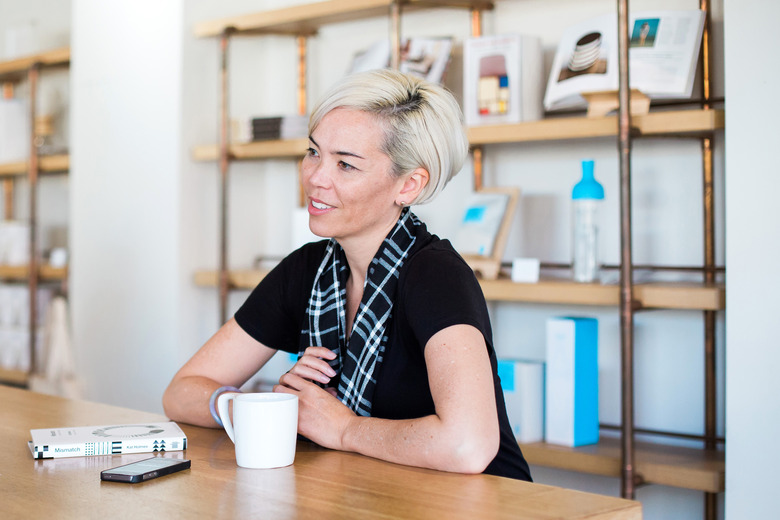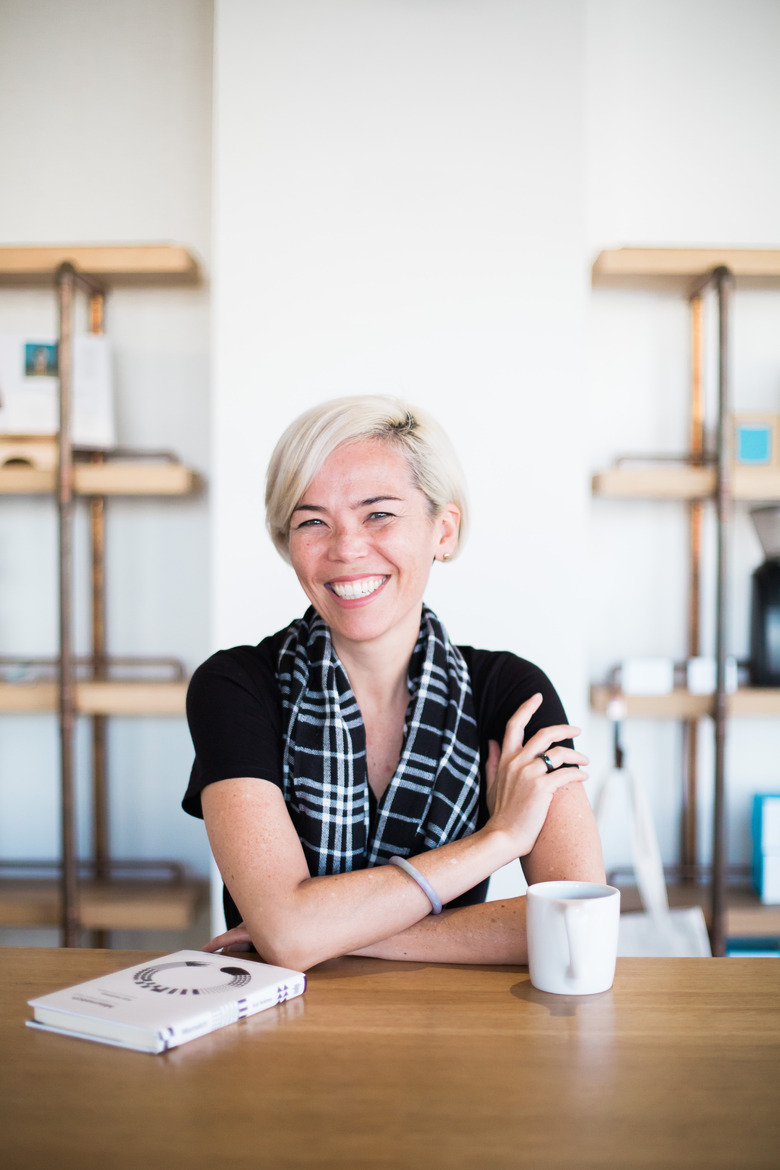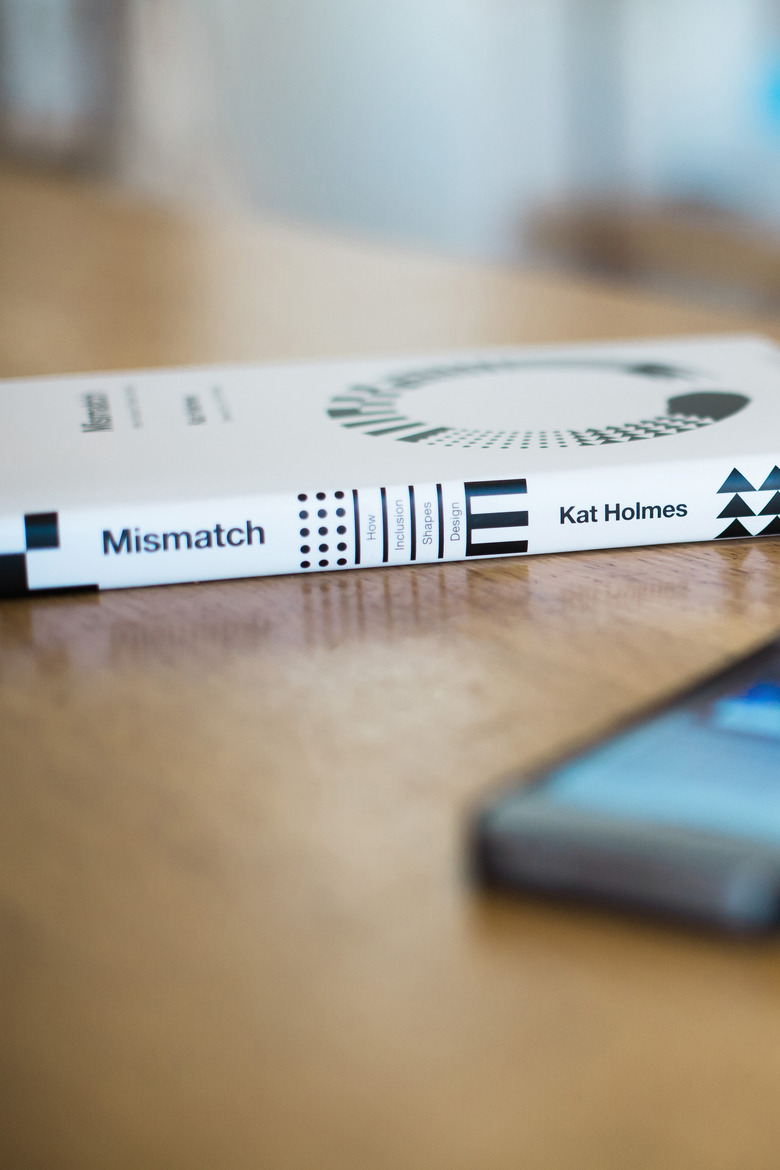Architect Of Impact: Kat Holmes
We may receive a commission on purchases made from links.
Thought experiment: Imagine you don't have hands. How would you interact with an increasingly high tech world? Would you be able to get cash out an ATM with a touch screen? What if you were blind? Could you check yourself in at an automated kiosk at the airport? Play a video game? Use an iPhone?
Situations such as these are called "mismatches" by the World Health Organization, which in 2001 published a social definition of disability as "a mismatched interaction between the features of a person's body and the features of the environment in which they live." And Kat Holmes, the Director of UX Design at Google, has found a niche in the technology and design field by focusing on how to correct these mismatches before they happen. In 2017, Holmes created an inclusive design tool kit that was inducted into the Smithsonian Institution's Cooper Hewitt Design Museum and founded mismatch.design, a firm dedicated to inclusive design education. "The idea of a mismatch really struck home with me," Holmes says, "because it squarely places the responsibility on designers and engineers. Every choice that we make in a product either increases or decreases those mismatches."
Here, Holmes talks with Hunker about her book, Mismatch: How Inclusion Shapes Design (MIT Press), why inclusion can make a company more profitable, and how a steamy affair may have led to the invention of the typewriter.
"I'm constantly thinking about who's listening and how can they take action to make a shift. This is not a burden of responsibility that should be placed on the excluded individual. If you have a position of power and opportunity to shift that for other people, the question really is: how can you work with different communities to produce a different outcome?" — Kat Holmes
Deanna Kizis: I think your book should be required reading for anyone in design, but it's also a fascinating read and helped me see the world through a new lens. Why are mismatches important?
Kat Holmes: We all experience mismatches as we move through the world, but some people encounter many more mismatches than others, often because their needs weren't considered in the design of most environments, products, or services. A mismatch is a barrier to who can or cannot participate in society, and sends a clear signal of who belongs, and who is unwelcome. Take, for example, swings on a playground. The design that many of us grew up with was a simple rectangular seat hanging from two chains. To use this design a person needs to be a certain height, have two arms, two hands, two legs, and specific degree of balance. If you don't match those qualities, you can't play on those swings.
DZ: You say that as digital interactions are on the rise there's a corresponding increase in mismatches. What are some examples?
KH: It's increasingly common to find public toilets that require you to wave your hand over a sensor, or touch screens to purchase tickets for a bus ride, and a huge number of websites don't meet basic accessibility criteria.
DZ: I have to say I hate those automatic toilets.
KH: And you can just imagine a company saying, "Wouldn't it be an amazing innovation, the toilet of the future, if you could just put a touch screen on it or to wave your hand over it?"
DZ: It's not OK. Because I don't want to wave my hand right over a toilet seat. And sometimes it flushes while I'm still peeing. I'm guessing whoever designed it is a man who didn't consider that women sit down when they go to the bathroom, so you get this rush of water on your butt before you stand up.
KH: Please write about that! And they introduced a change into an environment that is publicly required and accessed by lots of different people. The moment you introduce something like, "You now have to wave your hand," it's a new type of interaction to something that's very fundamental. So not only is it a poor design, it's an annoyance. The toilet is not behaving in the expected way. But then also, if you cannot reach a hand over with your balance — if there's a risk in reaching over — I think it can be a dehumanizing experience.
DZ: So h__ow can designers address mismatches?
KH: The solution that consistently makes a difference is building the skills to recognize exclusion before it happens. That's the real happy place. And to get ahead of it we need participation from people who experience that exclusion in the first place, before something is built. Because how do we as a habit anticipate a mismatch? It's nearly impossible to do it with our own ability biases. We will build something that we can see ourselves, or hear ourselves, or move ourselves.
So it requires matching up with people whose voice is missing and whose expertise is missing, and to seek to partner with people who have a deep expertise in navigating the world using a range of abilities — physical, cognitive, social, and more. And the real crux of that is it requires a trained designer, or a trained architect, to let somebody else's expertise supersede their own. That can be a real challenge.
DZ: You wrote about how inclusion should be considered in all phases of the design process, as opposed to being something that's checked off a list and eventually falls away.
Kat: Yeah. It's important to build in all those steps, not because you have to fix mismatches in every instance all the time. You can be aware of and recognize where mismatches are happening, and then either fix it or take responsibility for not fixing it.
DZ: You can't be all things to everyone all the time, but you can do your best.
KH: Right, and you can acknowledge the places where you made those tradeoffs or those choices and why. Then it's an intentional choice, as opposed to an accidental harm. Because I think the thoughtlessness is in many ways the biggest insult.
DZ: In Mismatch there are some great examples of how inclusive design ends up helping people in more ways than one might think.
KH: Take a front door at a grocery store that slides open automatically. That design was first created to work well for someone who's unable to hold the door open themselves, or someone who uses a wheelchair. But those work really well for someone who's pushing a stroller, or carrying groceries.
DZ: You also make the argument that inclusivity itself can make a product better, increase market share, or both.
KH: Audiobooks are a good example. The first books that were read aloud and recorded were for people who were blind or had low vision in the 1970s. But today audiobooks have gone on to benefit so many folks and now we're consuming content in different ways. And the thing I love about audiobooks as an example is functionally. It makes sense if I want to listen to a book while I'm driving, but also it's emotionally a different experience of interacting with story when you hear it narrated a particular way. So for opening up a market to more people in that respect, it, that really changed when a computer became personal and mobile and we started using it in many different environments. It was no longer just, I'm sitting in the library listening to an audiobook because I don't have access to the written pages. It's I'm moving through an environment all the time, and I can make use of this extra time by listening to this book I'm voraciously into. So just thinking about who those solutions are for starts to expand when we take that idea into a new context.
DZ: I was moved by your point that inclusive design matters in other surprising ways. For example, most of us will need inclusivity built in because we are going to age. But we don't anticipate that when we're young we might lose our ability to hear well, see well, move well...
KH: That's something that's been discussed in inclusive design for a very long time. In universities they have an ability and age lab that go together. The real challenge in digital tech is that it's changing so often. When we think about a city, we think about mixed use of that environment, but when we design digital products, we often think, Well this thing will change in six months, so I'll build it this way now. But the falsehood is that underneath, just like a city, there's always infrastructure that then makes other types of design possible, then other types, and the constraint carries on.
DZ: You talk about how exclusion can make people feel unintelligent, slow, or left out. Like, say I'm using a wheelchair, a flight of stars could make it impossible for me to enter a building. But what's the emotional impact of exclusion when it comes to technology?
KH: The example in the book is a project called Cyber Ball. It's a game created by Kipling Williams, a professor of psychology at Purdue University. He was looking for a way to test and study the physiological impact on the brain and the body of exclusion, and he tells the story of being in a park one day and seeing two people playing Frisbee. The Frisbee came to him and he threw it back, and they all played together. But then they stopped including him and just went back to playing with one another. Kipling had his own feeling of dejection because of that. So that gave him the idea for creating a software simulation that did the same thing, so that people in his study could play a game and feel like they're included, and then in a moment suddenly not be allowed to participate any more.
DZ: If I remember it right, people were placed in different rooms facing a computer screen, and they would "throw the ball" to somebody else, who would throw it back. But eventually two players would start playing on their own and stop throwing the ball to you.
KH: Right. So you didn't get the ball any more, and what's fascinating in reading his work is that people felt hurt, because they assumed that those were two human beings in other rooms playing with each other. And in some cases, once they were told that was actually a computer program that made those decisions, they were even more upset, because the expectation is that technology is impartial, that technology doesn't discriminate. And who do you get upset at? Who do you hold accountable?
DZ: Because a computer doesn't care how you feel.
KH: No. You can get mad at the computer, but it doesn't feel satisfying nearly enough. How would I convince a computer of how I feel? The computer doesn't care how I feel.
DZ: In Mismatch I really enjoyed the "love stories," as in, moments in history when love spurred on inclusive design.
KH: Yeah, the flexible straw was designed by a father whose young daughter was having trouble drinking her beverage. The OXO brand of kitchen tools was first created by a family who wanted to make utensils easier to use for a family member with arthritis. And the very first kind of typewriter prototype was created between an Italian inventor named Pellegrino Turri and his very good friend — some people say lover — Countess Carolina Fantoni da Fivizzano. The countess was losing her sight, and they wanted to be able to communicate while they were apart, but if you were blind in the mid-1800s, you had to dictate your letter to somebody else who was writing.
DZ: And if they were steamy letters, that would have been a real problem.
KH: Right. So they worked together to create the first known prototype of a typewriter, so the countess could write her own letters. And the thing that's interesting about that example of inclusive design, is it's more how that solution was made than it was about the outcome. The outcome certainly created access for the countess, and it created access for any of us who are able to use a keyboard, but it didn't create access for those who can't.
DZ: The the last question I wanted to ask you is, have you ever experienced exclusion yourself?
KH: People ask me about my passion in this topic, and it's really caused me to reflect on specific moments in my life and why I have brought together all these ideas in a particular way. So the answer is yes. I think we all have. And I don't talk about them very often, but the reason I'm compelled to write about exclusion comes from one of the most overt, most aggressive forms. I grew up in Oakland, very diverse environment. But in high school, my family moved to a very suburban place which is ironically all Asian today, but at the time was not. And so I had an encounter with neo-Nazis off the campus of my school. I was new to this area, one of five, like, non-Caucasian kids in the school including my sister, and I had this experience. Really negative. I'd never experienced anything like it before. And the thing that made it hard for me is that when I talked to the school administrators about it, and I was told that there was nothing that could be done because it was right off of school grounds, and it pissed me off so much. And this is only something I've reflected on in the process of writing. Now people respond to the things that I've written, and I believe it's important for many voices to be represented. But it also really matters who listens and who takes action on what they hear.
DZ: So we're talking about the decision-makers here.
KH: I'm constantly thinking about who's listening and how can they take action to make a shift. This is not a burden of responsibility that should be placed on the excluded individual. If you have a position of power and opportunity to shift that for other people, the question really is: how can you work with different communities to produce a different outcome?
1. Credits
Words: Deanna Kizis
Images: Bonnie Tsang



